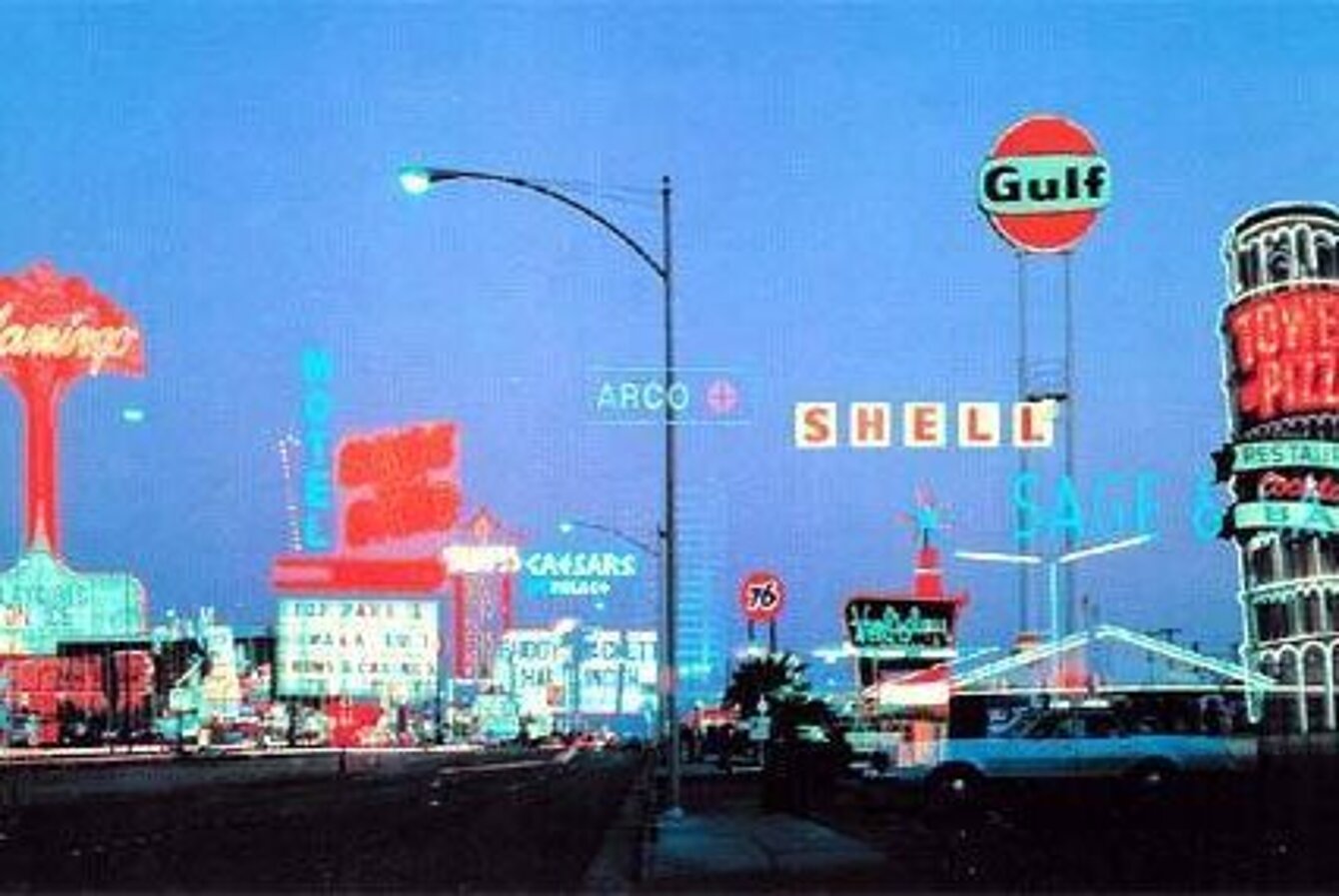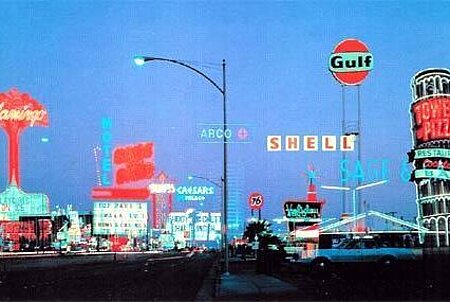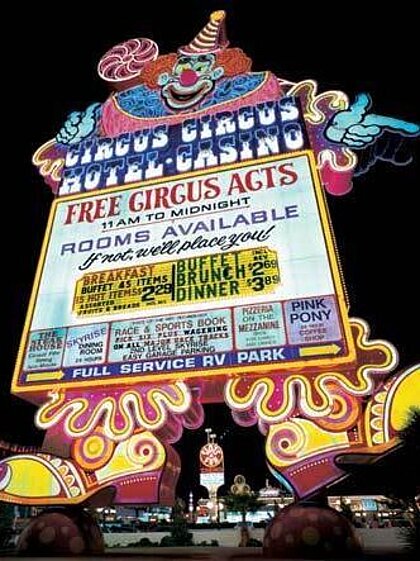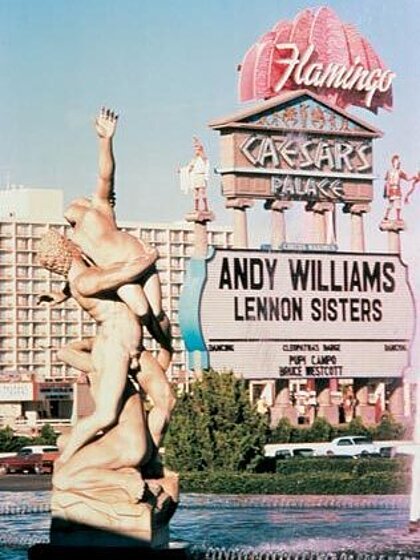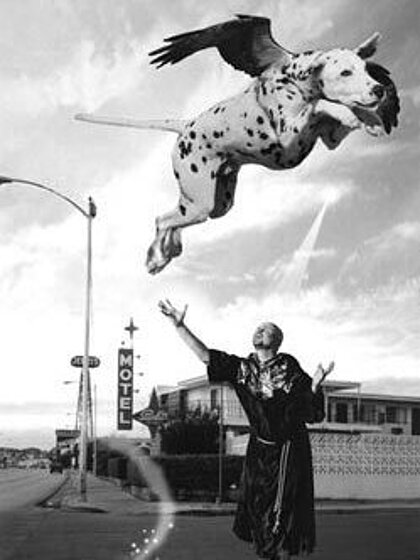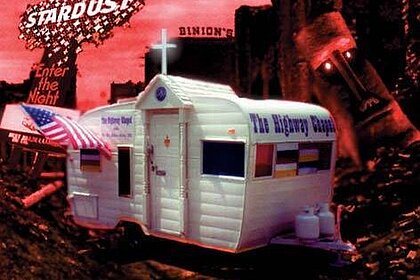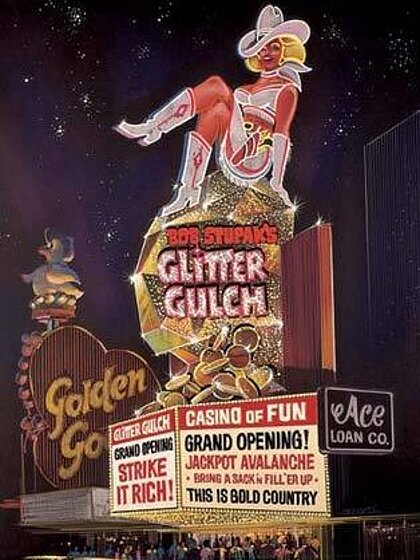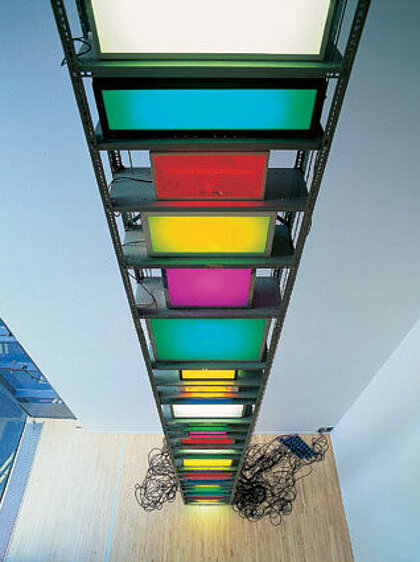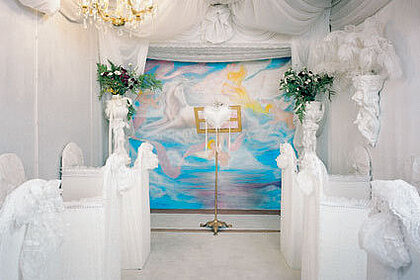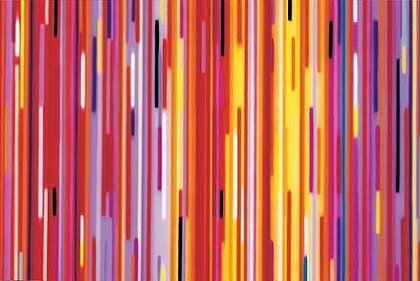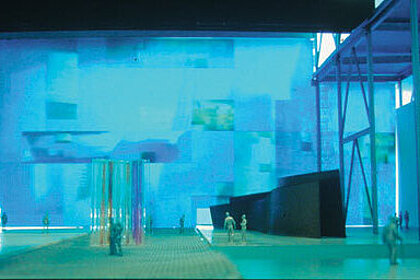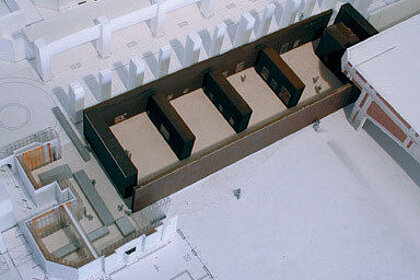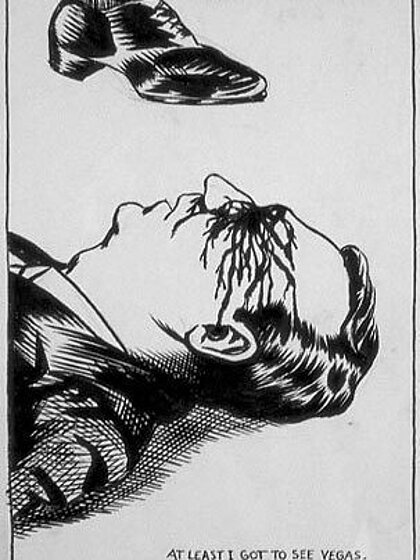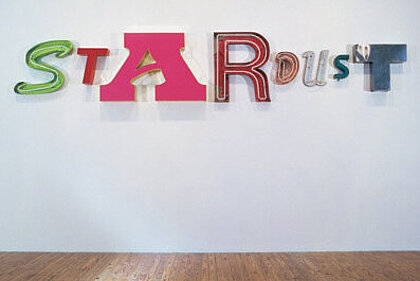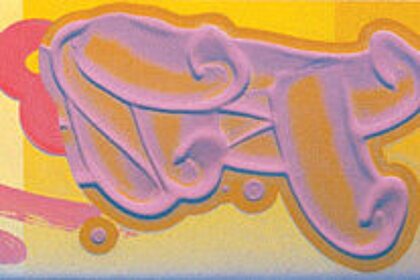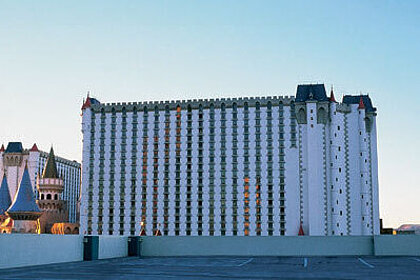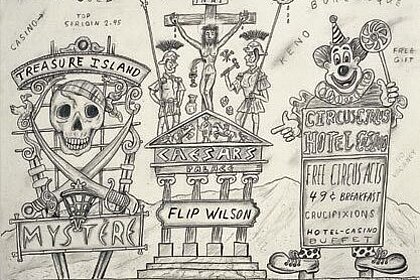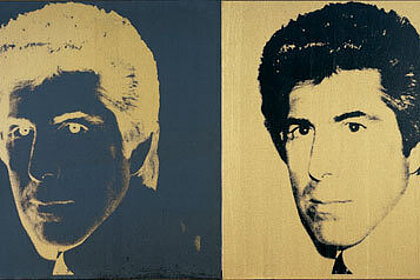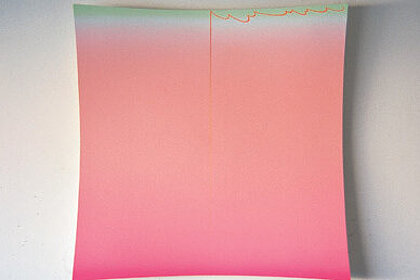Is Las Vegas, capital of the western entertainment industry, also set to become the capital of art? At this historic moment, art is losing the visionary power to which it used to lay claim; art in general is drawing closer to the forms of the entertainment industry (from lifestyle to game shows) - and even in this respect its efforts are lagging behind. So, in a paradoxical turn of events, Las Vegas is also becoming the capital of the future cultural industry. The construction of the museums 'Guggenheim Las Vegas' and 'Hermitage Guggenheim' by Rem Koolhaas can be seen as the latest radical phase in this development: the inclusion of art in the entertainment complex, meaning that art is obviously ready for integration into the entertainment industry.
'The Magic Hour' exhibition shows the entertainment metropolis of Las Vegas in the American state of Nevada as a phenomenon existing between reality and fiction and how this has influenced art. It is the first museum exhibition to adopt this theme and to attempt an analysis of the fundamental aspects contributing to the unique nature of the place. It is no coincidence that a large number of artists today live in or are visitors to Las Vegas. Since the publication of 'Learning from Las Vegas' (Venturi/Scott Brown/Izenour) in 1972, much has changed, both within the art world and more generally in terms of life in society.
Entertainment appears to have become a fetish, a matrix for all forms of life. This exhibition aims to uncover what we have now learnt from Las Vegas and what kind of effect this could have had on society. The area between art and pure entertainment, on whatever level, is so fluid that it is difficult to locate. So the exhibition is to be both part of a casino and museum. No different from the real Las Vegas. Venice has been partially reconstructed there, in the same dimensions using the same materials, and serves as a hotel. The Bellagio resort and casino houses an art collection that includes paintings from El Greco to Picasso, promoted in the same way as Frank Sinatra or the Beach Boys. The two sides of the discussion are given on the one hand with Venturi, Scott Brown and Izenour's book 'Learning from Las Vegas' and on the other hand by Dave Hickey and Libby Lumpkin's teaching at the University of Nevada in Las Vegas.
In terms of theory, 'Learning from Las Vegas' served as an interface between modernism and post-modernism. When the theoretician and all-rounder Dave Hickey and the art historian Libby Lumpkin moved to Las Vegas at the beginning of the 1990s, a new level of interest within the perception of the 'Vegas phenomenology' developed. For Hickey, the Strip served as a platform for his critique of the elitist and purist structure of values within the art world. Apart from this, Hickey brought leading artists such as David Reed, Jim Isermann, Jim Shaw or Jeffrey Vallance to Las Vegas and his teaching drew many young artists to Las Vegas. Libby Lumpkin is now working for casino visionary Steve Wynn as curator in the museum-style gallery of the Bellagio casino hotel.
'The Magic Hour' will of course cover all areas (fine art, design, architecture and show business). The project's curator, Alex Farquharson, a young and committed London-based theoretician, has been studying the situation for a long time now. An entertainment complex spreads globally on all levels of society, including culture as a whole. The "society of spectacle" (Guy Debord, 1967) has become a reality. The masses, politics and the spectacle form an alliance. Even cultural institutions in marginal places like Graz are disfigured by this powerful alliance. The Las Vegas phenomenon demonstrates the convergence of the entertainment complex and the culture industry. If, in the course of globalisation, the convergence dominates world-wide, the example of Las Vegas can be used to elucidate the future of art in the global entertainment complex. Las Vegas serves as a magnifying glass, making the future practices and problems of art imaginable on a microscopic level.
In the age of global amusement, the Neue Galerie gets to the bottom of things and starts from the roots upwards - "The Entertainment Capital of the World" - Las Vegas, Nevada.
Günther Holler-Schuster, Peter Weibel
Artists:
Reverend Ethan Acres (USA), Philip Argent (USA), David Batchelor (GB), Tim Bavington (USA), Jane Callister (USA), Karen Carson (USA), E. Chen (USA), Marcel Duchamp (F), Jane Hilton (GB), Jim Iserman (USA), Liberace (USA), Silke Otto-Knapp (D/GB), Raymond Pettibon (USA), Jack Pierson (USA), Victoria Reynolds (USA), Bridget Smith (GB), Robert Venturi, Denise Scott Brown and Steven Izenour (USA), Jeffrey Vallance (USA), Andy Warhol (USA), Yek (USA), u.a.
Exhibition site: Künstlerhaus, Burgring 4, 8010 Graz
Guided tours: by previous arrangement
The exhibition is accompanied by a 200 page fully illustrated catalogue.




















